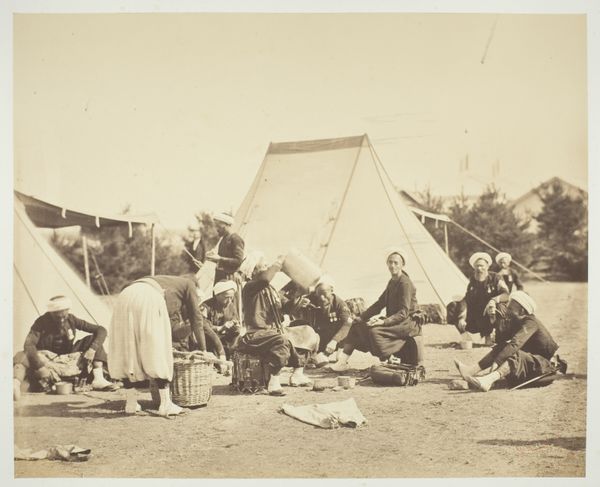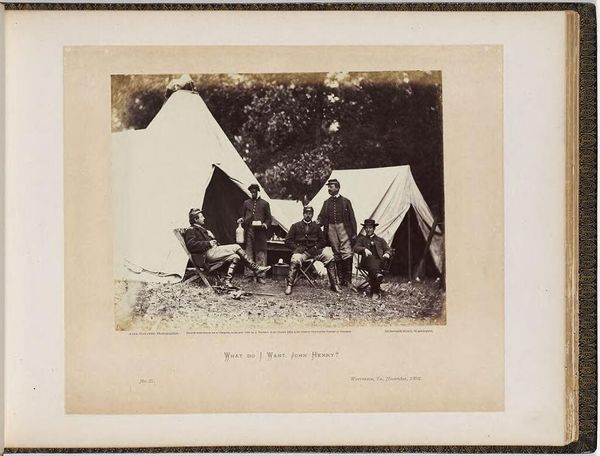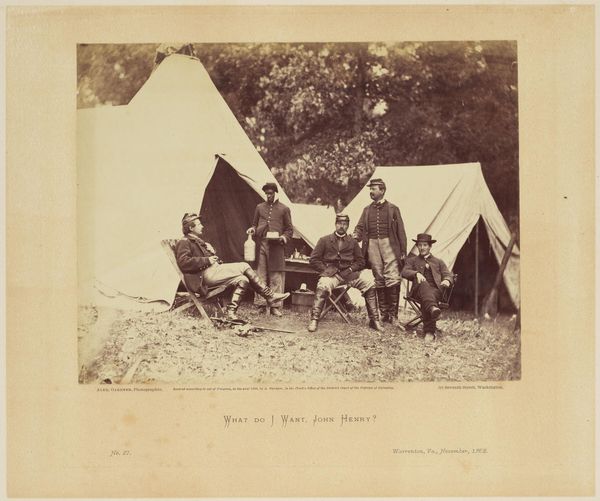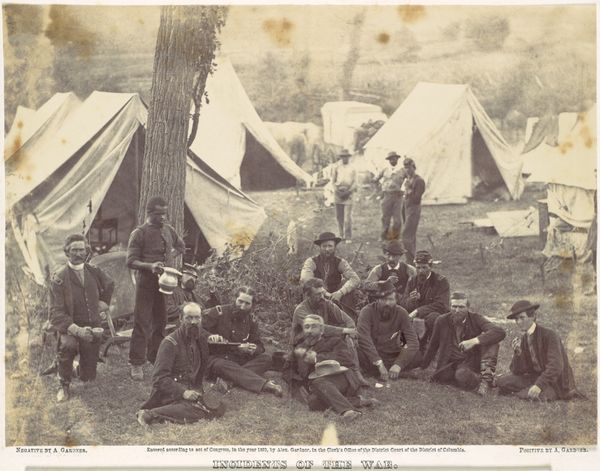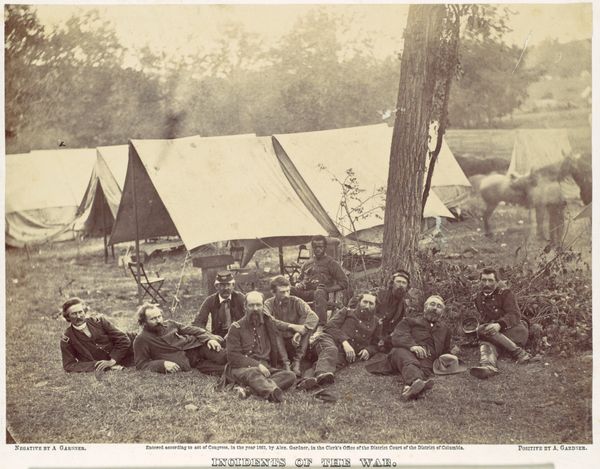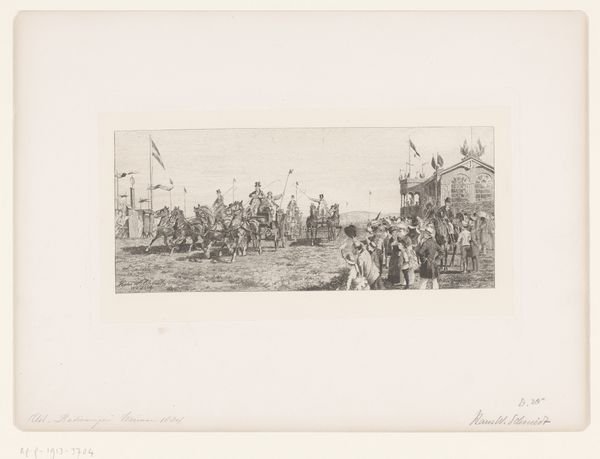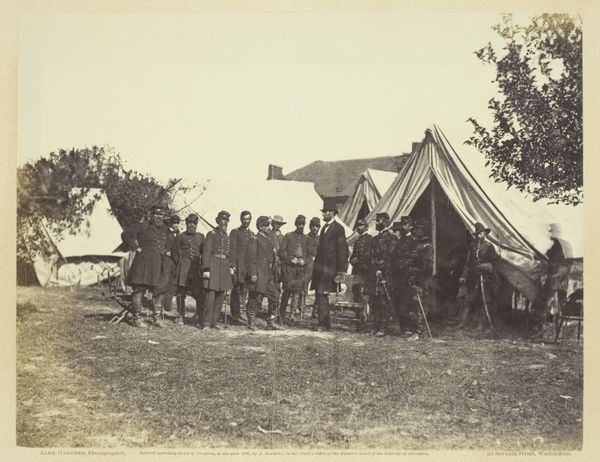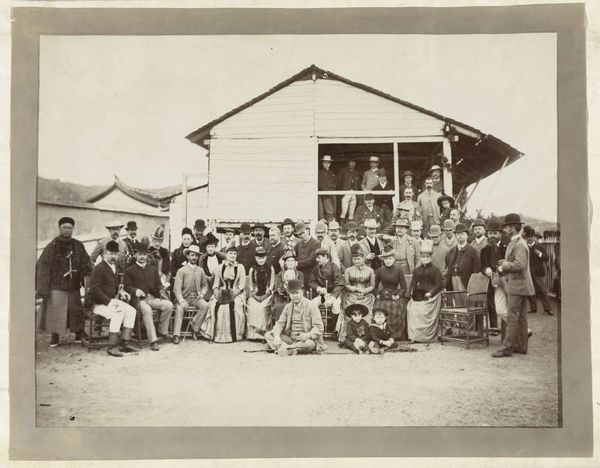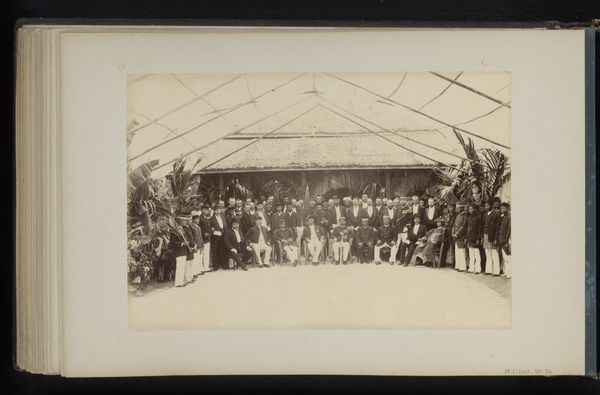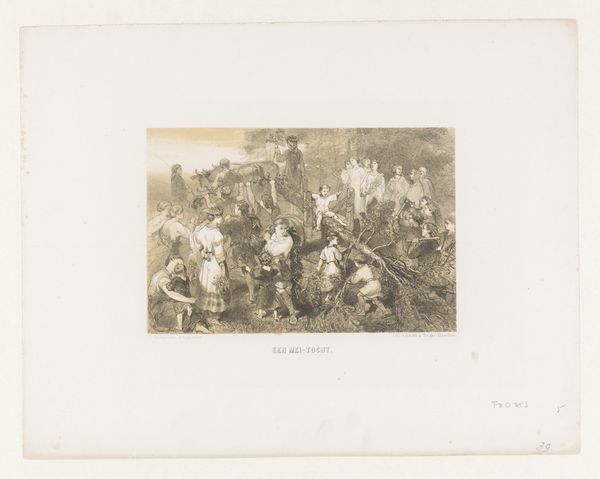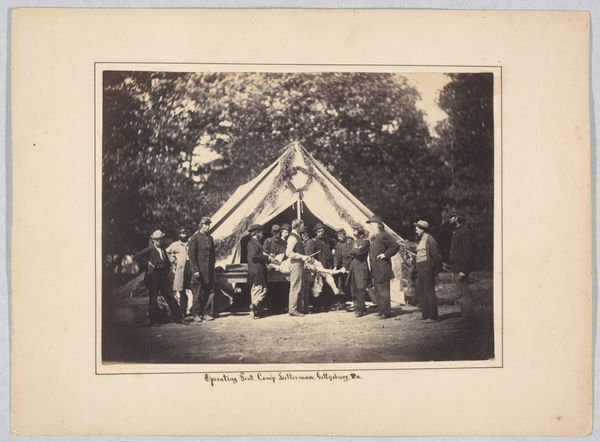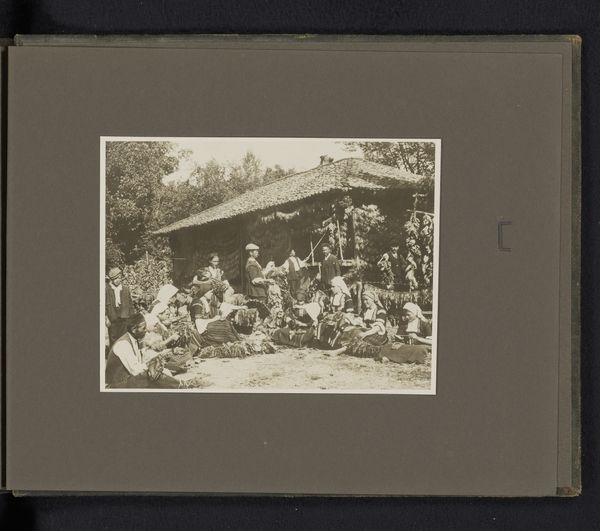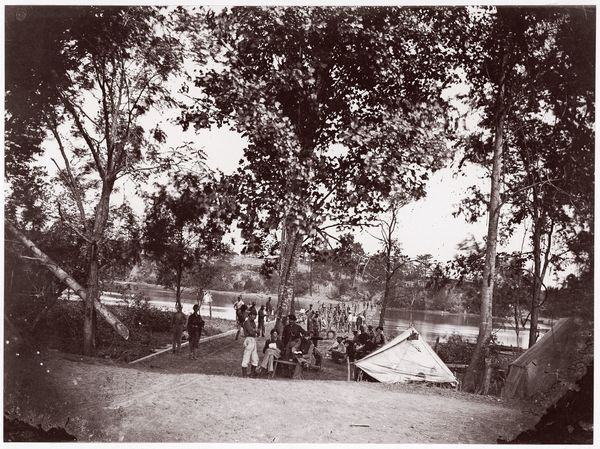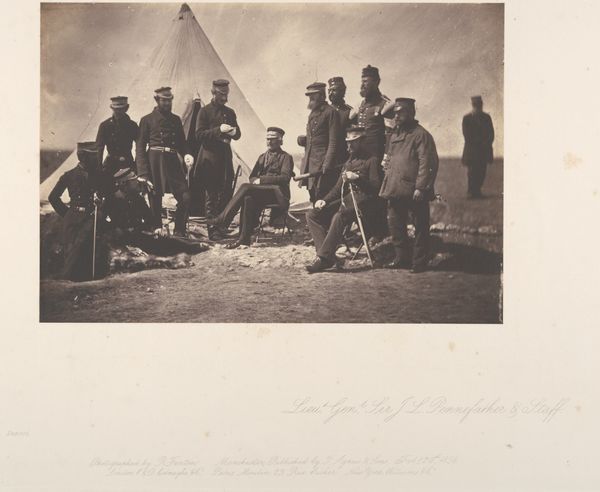
Group at Secret Service Department, Headquarters, Army of the Potomac, Antietam, October 1862 1862
0:00
0:00
photography, gelatin-silver-print
#
war
#
archive photography
#
photography
#
soldier
#
group-portraits
#
gelatin-silver-print
#
history-painting
#
realism
Copyright: Public Domain
Curator: Alexander Gardner's "Group at Secret Service Department, Headquarters, Army of the Potomac, Antietam, October 1862," a gelatin-silver print taken during a profoundly turbulent moment in American history. Editor: My initial reaction is a sense of studied stoicism. The sepia tones evoke a heavy weight, and the arrangement, the way these men present themselves…it's all carefully considered, staged for posterity, I'd say. Curator: I'm drawn to the material conditions that produced this image. Consider the laborious wet plate collodion process Gardner employed, lugging his darkroom tent across the Antietam battlefield. Each print was the result of immense physical effort and chemical mastery. Editor: Absolutely, and you can discern some of the constraints of that process within the composition itself. The stillness of the figures suggests the longer exposure times. But beyond the practical, the composition organizes a complex web of power relationships. See how General Allan Pinkerton is centered? Curator: True, Pinkerton's position reinforces the hierarchical structure of the military, as do the sartorial choices and objects they wield: look at the swords. Yet, I'm struck by the image's function as wartime propaganda. These photographs were consumed by a public eager for news and reassurance. How does that knowledge shift your view? Editor: It deepens my reading, actually. The formality contradicts the immediacy we expect from photojournalism, doesn't it? Instead, it feels like they're consciously constructing a narrative of control, of a well-oiled machine in the face of utter chaos. It's interesting how the uniforms serve as visual signifiers too. Curator: Right. Uniforms weren't just protection; they signified allegiance, manufacturing consensus. So this photograph not only documents, but also performs, a specific version of the war for civilian consumption. We must think critically about the layers of mediation between experience and image. Editor: The act of creating such an image – carefully composing this "incident of the war" for broader distribution – is clearly as powerful as any action these men took on the battlefield. I appreciate this piece as a way to look deeply into constructed images. Curator: And for me, reflecting on Gardner's access to resources, his equipment, his audience…it exposes photography as an industrial process deeply entwined with social and political power.
Comments
No comments
Be the first to comment and join the conversation on the ultimate creative platform.
